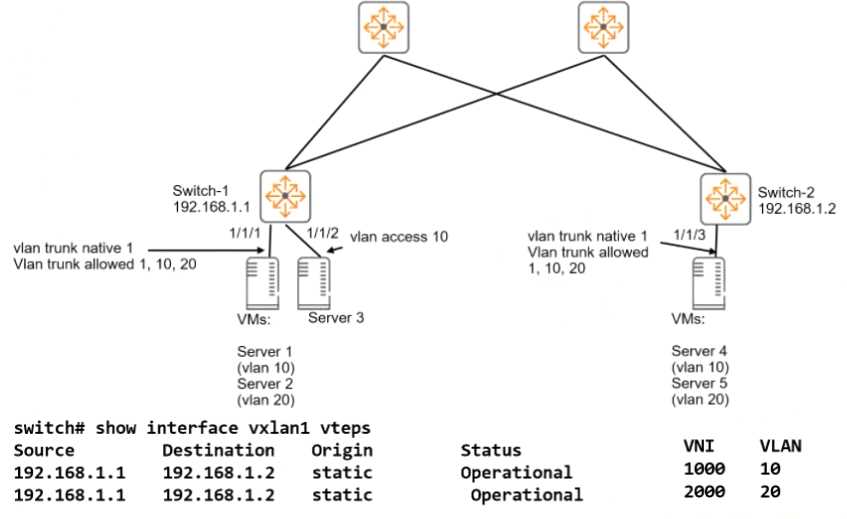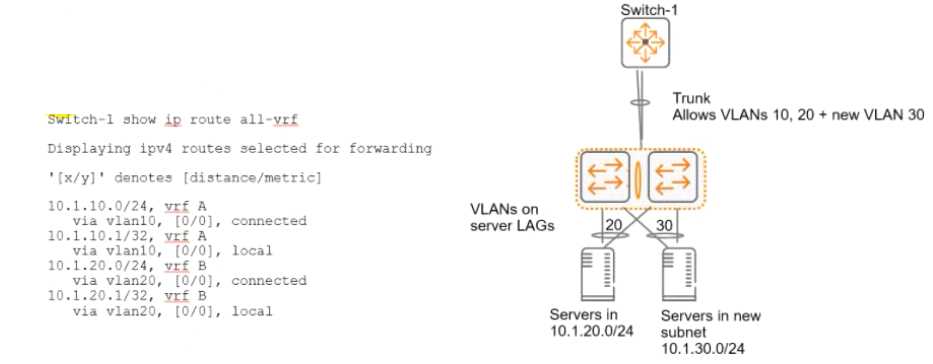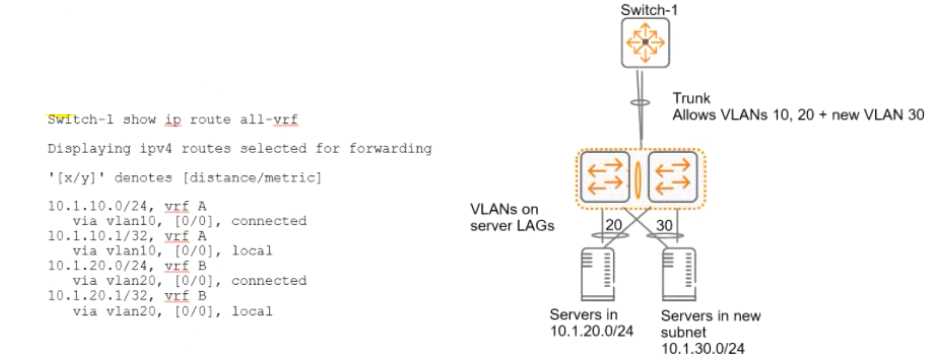HP HPE2-W09 Exam Questions
Questions for the HPE2-W09 were updated on : Jun 23 ,2025
Page 1 out of 6. Viewing questions 1-15 out of 79
Question 1
Refer to the exhibit.
Switch-1 and Switch-2 ate ArubaOS-CX switches that implement VXLAN WITHOUT Ethernet VPN
(EVPN). Switch-2 uses the same VNI-to-VLAN mappings as Switch-1. Is this how the specified servers
communicate?
Solution: The first time that Server I communicates with Server 3, It sends an ARP request to resolve
Server 3's MAC address.
- A. Yes
- B. No
Answer:
A
Question 2
You want to use NetEdit to configure an AtubaOS-CX switch.
Is this a minimum requirement for setting up communications between the switch and NetEdit?
Solution: Enable the REST interface in read-only mode.
- A. Yes
- B. No
Answer:
B
Question 3
You want to use NetEdit to configure an AtubaOS-CX switch.
Is this a minimum requirement for setting up communications between the switch and NetEdit?
Solution: Make sure that the SSH server is enabled.
- A. Yes
- B. No
Answer:
A
Question 4
Is this a guideline for establishing a Virtual Switching Extension (V5X) Inter-Switch Link (ISL) between
two ArubaOS-CX switches?
Solution: Use the same speed on every link In the ISL.
- A. Yes
- B. No
Answer:
A
Question 5
Refer to the exhibit.
Refer to the exhibit.
You are adding a VLAN 30, subnet 10.0.30.0/24 to the network shown in the exhibit. (This network is
simplified to just the relevant switches for this item.) This subnet belongs in VRF A, and you have
added a Layer 3 VLAN 30 interface attached to this VRF on Switch-1. You want to make the services in
this VLAN available to devices in 10.1.20.0/24 in VRF B.
Is this part of a valid setup for meeting these requirements?
Solution: Add VRF B as the secondary VRF on VLAN interface 30.
- A. Yes
- B. No
Answer:
B
Question 6
Refer to the exhibit.
You are adding a VLAN 30, subnet 10.0.30.0/24 to the network shown in the exhibit. (This network is
simplified to just the relevant switches for this item.) This subnet belongs in VRF A, and you have
added a Layer 3 VLAN 30 interface attached to this VRF on Switch-1. You want to make the services in
this VLAN available to devices in 10.1.20.0/24 in VRF B.
Is this part of a valid setup for meeting these requirements?
Solution: Add a route with this command: ip route 10.1.20.0/24 vlan20 vrf A
- A. Yes
- B. No
Answer:
B
Question 7
Is this part of a valid strategy for load sharing traffic across the links in an Ethernet Ring Protection
Switching IERPS) solution?
Solution: Implement Virtual Switching Extension (VSX) on pairs of ERPS switches at the same site.
- A. Yes
- B. No
Answer:
B
Question 8
You plan to use multi-protocol BGP to implement dynamic VRF route leaking on an ArubaOS-CX
switch.
Is this a rule for the setup?
Solution: You can only leak routes between up to three VRFs.
- A. Yes
- B. No
Answer:
A
Question 9
You plan to use multi-protocol BGP to implement dynamic VRF route leaking on an ArubaOS-CX
switch.
Is this a rule for the setup?
Solution: You cannot leak multicast routes.
- A. Yes
- B. No
Answer:
B
Question 10
A customer's servers use ISCSI, and they send data and storage traffic on the same pair of I OGbE
links. Is this a best practice for supporting the ISCSI requirements?
Solution: Set up dedicated switches to connect to iSCSl arrays. Connect top of rack (ToR) switches,
which will support both data and storage traffic, to those dedicated switches.
- A. Yes
- B. No
Answer:
A
Question 11
Is this statement about ARP and ND Suppression true?
Solution: Both ARP-Suppression and ND-Suppression are disabled by default.
- A. Yes
- B. No
Answer:
B
Question 12
AtubaOS-CX switches are acting as Virtual Extensible LAN (VXLAN) Tunnel Endpoints (VTEPs)
WITHOUT Ethernet VPN (EVPN).
Does this correctly describe how the VTEPs handle VXLAN traffic forwarding?
Solution: VTEPs that use headend replication forward unicasts with unknown destination MAC
addresses as unicast packets to each VTEP in the same VNl.
- A. Yes
- B. No
Answer:
B
Question 13
Is this how you should position switches in the ArubaOS-CX portfolio tor data center networks?
Solution: Deploy Aruba 83xx switches as data center leaf switches.
- A. Yes
- B. No
Answer:
A
Question 14
Is this how you should position switches in the ArubaOS-CX portfolio tor data center networks?
Solution: Deploy Aruba 83xx switches as core switches for very large three-tier data center networks.
- A. Yes
- B. No
Answer:
B
Question 15
Is this a requirement for implementing Priority Flow Control (PFC) on an ArubaOS-CX switch
interface?
Solution: configuring trust of Cos on the interface
- A. Yes
- B. No
Answer:
A